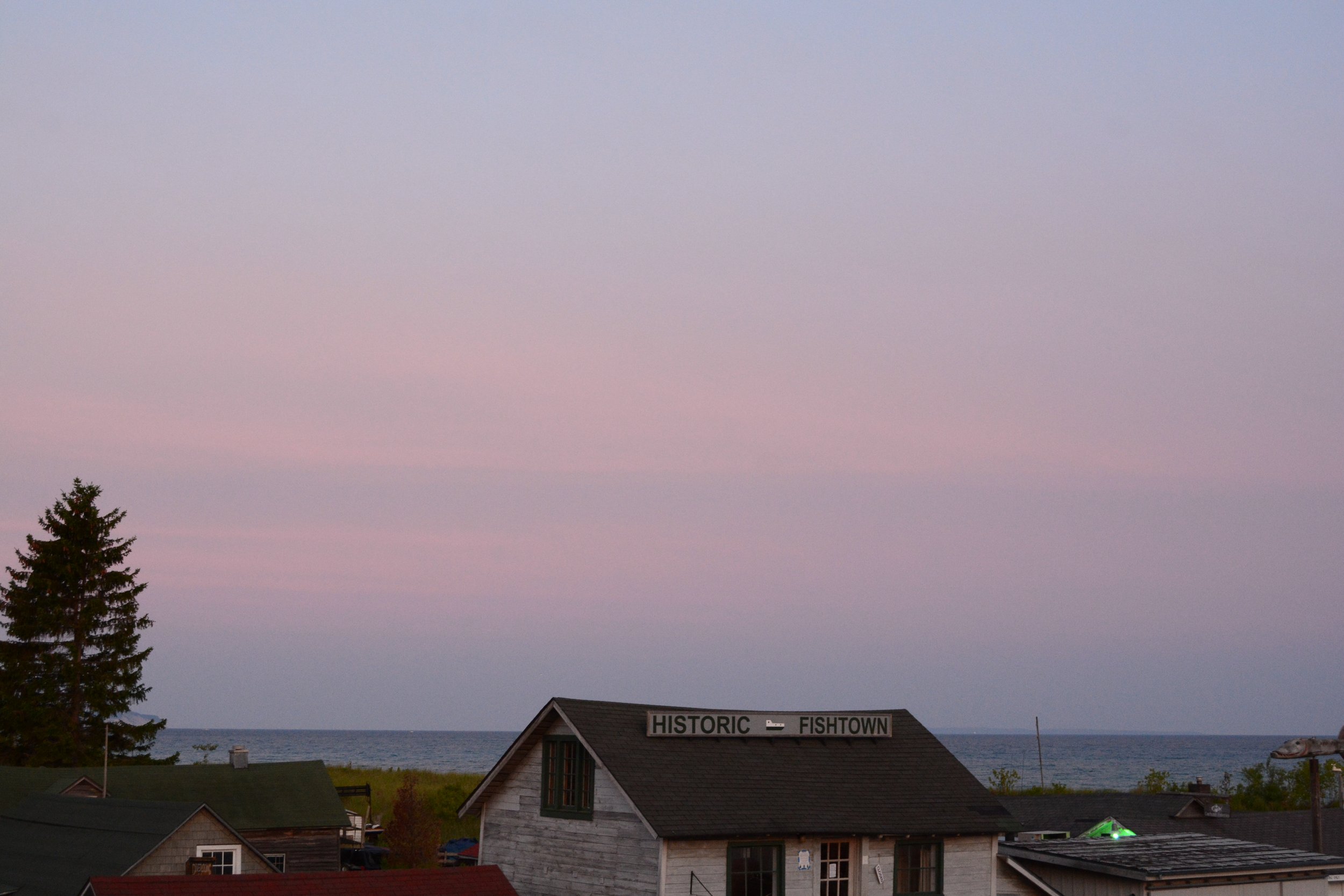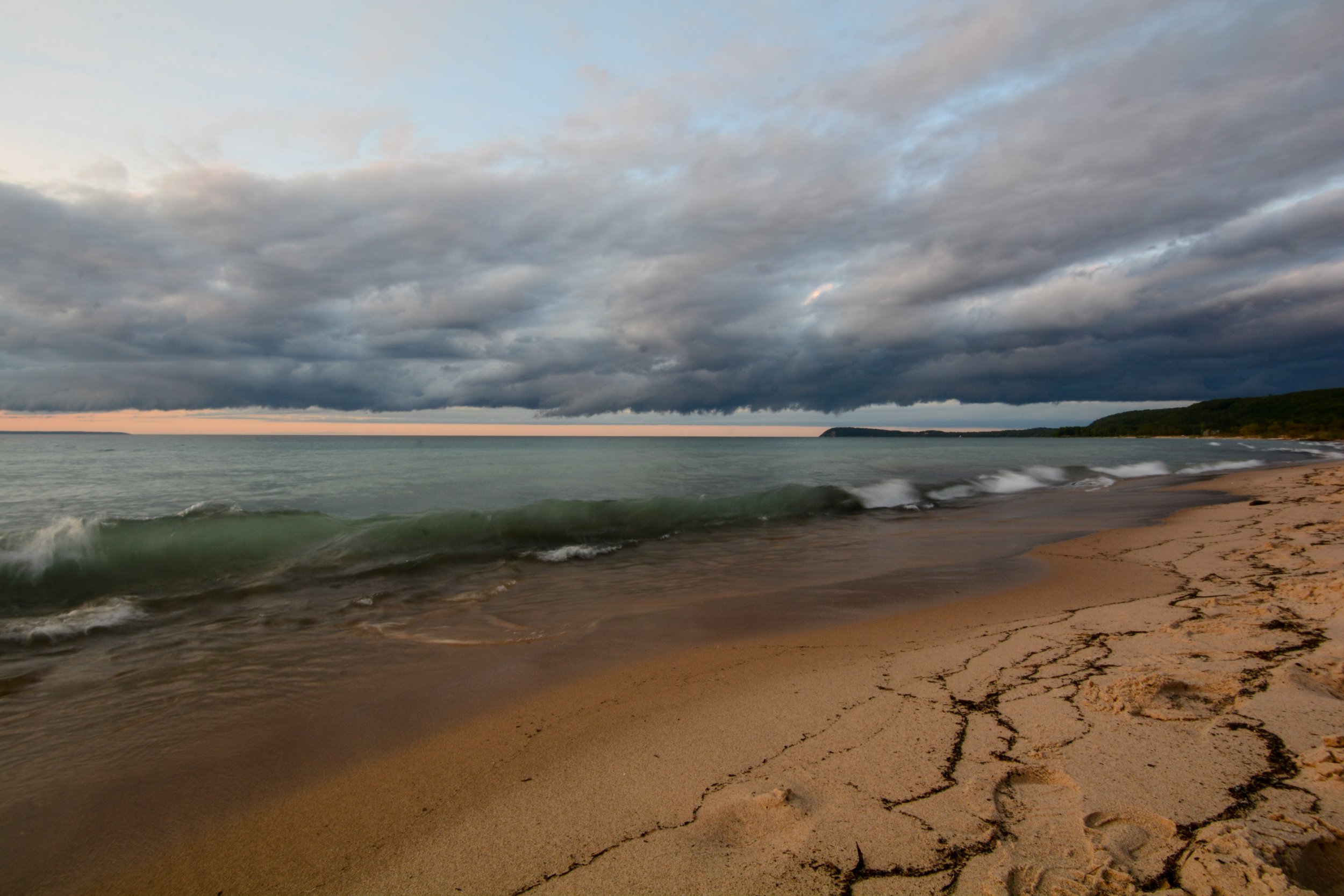
The History of Leland and Fishtown
Learn more about the village of Leland and historical Fishtown.
A brief history of Leland
Modern Leland is the site of the oldest and largest Ottawa village on the Leelanau Peninsula. Not far from the river which flowed into Lake Michigan, bark-covered shelters, gardens and fishing sites marked the settlement of Mishi-me-go-bing, "the place where canoes run up into the river to land, because they have no harbor". Some called it Che-ma-go-bing. European settlement began when the Antoine Manseau family came from North Manitou Island in 1853. Antoine Manseau, his son Antoine Jr., and John Miller built a dam near the outlet of what was called the Carp River. Next to the dam they erected a water-powered sawmill, a necessity for the building of a new community. The families of Cook, Porter, Bryant, Buckman, Pickard, Cordes and Thies soon arrived, and docks were constructed as wooding stations. Steamers and schooners tied up at these docks, bringing more and more settlers, and Leland had 200 people by 1867.
Antoine Manseau’s route between Leland and the Manitou Islands has been travelled thousands of times, by residents of and visitors to North and South Manitou. The Grosvenor family, whose genealogy traces to the islands, has operated mail and passenger boats between Leland and the Manitous for many years, departing from Leland’s historic Fishtown. Other island families carrying maritime traditions into the 20th Century are the Telgards and the Carlsons. Martin Telgard built boats in Northport before coming to Leland to establish with his wife, Leone (Carlson), the Blue Bird restaurant in 1927. Maritime photos are displayed on the inside walls of the establishment, reminding us of the heritage of the area. Carlson’s Fisheries supplies whitefish and other fish to local restaurants and to the public. Racks of fish are removed from the smokers and offered for sale in Fishtown, where the family bases its historic fishing tradition.
The steamers Buffalo, Lawrence, Champlain, City of Traverse City, Illinois, Rising Sun, Manitou, Puritan, Spirit, Michigan, Alleghany, Fountain City, and Idaho; schooners Hiram Merrill, Cora A., Lucky; the sloop Defiance and many other vessels brought passengers and their homesteading supplies. They came from Buffalo, Cleveland, Chicago, and other ports to take their place among the Leelanau Peninsula citizens. As comfort increased, by the way of lodges and mercantile, resorters also arrived on the Lake Michigan vessels. Some returned, summer after summer, and others made Leland their permanent home. By 1900, the county population registered over 10,500 and Leland became a county seat.
To learn more about Leland and Leelanau history, visit the Leelanau Historical Society Museum and Store in Leland.
Who named Leland?
The early vessels which navigated the water of the great lakes were sailing ships. Indeed the sailing vessels maintained their supremacy against steamers in the commerce of the inland seas until well toward the close of the 19th century. They were peculiarly adapted to the lumber carrying trade.
As they plied between the southern ports of Lake Michigan and the ports of Traverse Bay or the straits of Mackinaw, it was necessary for them to sail not far from the land after they passed between Sleeping Bear Point and the Little Manitou. They must be aware of the shore in that district of strong and frequent (and at times very sudden) storms of Northwest winds. They were safe enough where they had plenty of room to tack and change their course until the wind abated; but there was scant sea room between the Manitous, Beaver, and Fox Islands to windward and the mainland to leeward for such a task in the storm.
They had to look out for that “Lee Land” and many a shipwreck upon that Lee Land shore attested the danger they incurred. That “Lee Land” become a mighty fact in the thoughts and plans of sailors and ship and cargo owners. The Lee Land was well-known to them before 1850. “Lee - the quarter toward which the wind blows” - Leeland. Now LELAND.
Historic Fishtown
Along the Leland River, as it feeds in Lake Michigan, is Leland’s Historic Fishtown - one of the last working and thriving fishing districts on the Great Lakes. Native Americans first lived and fished from this site, with European settlers arriving in the 1850s and creating the current fishing village. Fishtown was, and is still, comprised of weathered fishing shanties, smokehouses, overhanging docks lined with fish tugs, charter fishing boats, and the Manitou Island Transit ferry. Today, many of the shanties are home to small, local businesses. Each year, thousands of visitors enjoy and appreciate the shanties, fish tugs and docks, that remain a crucial part of Lake Michigan’s fishing heritage.
Carlson’s Fishery, a family business now passed down through five generations - opened in 1904 in one of the shanties along the docks. Through the years, the Carlson family weathered many changes - from government policies, revisions in fishing territories, adjustments in quotas, fish population dynamics, contaminants, and invasive species to remain a sustainable business. In 2004, they sold the Fishtown property, fishing licenses, tugs and gear to the non-profit Fishtown Preservation Society, with the provision that they be able to continue operating their retail business at the dock.
Today, Fishtown Preservation Society manages and maintains Fishtown, so visitors may still experience one of the few remaining commercial fishing villages on the Great Lakes. The endearing fishing tugs, the Janice Sue and the Joy, remain working Fishtown icons - integral to Leland’s continuing fishing culture. Visit Fishtown, and enjoy the unique shops and galleries, get a great sandwich from the Village Cheese Shanty before taking the ferry to North or South Manitou Island, and stop by Carlson’s Fishery to pick-up the best smoked fish, whitefish sausage, fish pate, and fish jerky in our region.



